28 July 1956 – the 24 Hours of Le Mans starts at 4 o’clock in the afternoon and it’s raining in France. An inauspicious start to an already exceptionally dangerous motor race! With 60 years of history in its rearview mirror, the starting grid of the race is utterly jaw-dropping, with legends like de Portago, Trintignant, Gendebien, von Trips, Hill, Maglioli, Behra, Fangio, and Castelloti piloting prototype and production machinery with names like Ferrari, Aston Martin, Jaguar, Talbot, Porsche, Lotus, and Gordini on their bonnets. This is the golden age of motor racing: the era of an unbroken Mulsanne Straight, mind-bending speeds, and supreme, life-risking danger in pursuit of eternal glory. But this will not be an easy race, and the gentlemen on the starting grid, about to sprint across the front stretch and jump into their cars, know it. After all, 49 cars will start the race, only 14 will finish, and one man will even lose his life.
One of the most stunningly beautiful cars on the grid was the formidable Jaguar D-Type, bathed in traditional Scottish dark blue with a white cross, the traditional colors of the Scottish outfit Ecurie Ecosse. Standing across the track is Ron Flockhart, one of its two drivers, an Edinburgh-born Scottish gentleman driver, who might not have known it, but was on his way to two consecutive Le Mans wins. Quite the adventurer, he would, several years later, make two attempts at breaking the flight record from Sydney, Australia, to London, England, in a war-era P51 Mustang. The Glasgow-born Ninian Sanderson was also on hand, Flockhart’s teammate, and by all accounts his polar opposite – a practical joker with a biting sense of humor but the same spirit for adventure … a yachtsman, he raced aggressively in regattas on the Clyde Coast of Scotland.
There they stand – two privateer entries in a competitive field, about to begin a 24-hour battle in condition that Motor Sport Magazine described in the September 1956 issue as “terrible, with rain and mist, and driving at all, let alone racing, was a nightmare … How drivers can take a quick two or three hours’ sleep and then go on again defies explanation!”
So what brought Flockhart and Sanderon to Le Mans in 1956 behind the wheel of a D-Type?
Crafting a Le Mans Winner
Following their win at Le Mans in 1953, where Duncan Hamilton and Tony Rolt led a veritable parade of C-Types to three of the top four finishes, Jaguar faced a problem. It was evident that the limits of the XK 120-based race car had been reached, and that to remain competitive at Le Mans, a new car would be required.
While the C-Type had been one of the first cars of its era to employ a steel-tube space-frame, its successor was perhaps the first to claim unitary monocoque construction, with the body and frame being combined for structural integrity. The successful and proven 3.4-liter XK engine was retained, but it was now fitted with triple Weber carburetors good for 245 horsepower. A dry-sump lubrication system was also adapted that reduced height, allowing the engine to be mounted lower, and correspondingly reducing the overall profile and coefficient of drag. It was clear that the design was effective when one of the new cars hit 169 mph on the Mulsanne Straight at the Le Mans trials in April 1954. As the previous Jaguar had been called the C-Type for “competition,” the new Jaguar was dubbed the D-Type.
The D-Type made its debut at the 1954 24 Hours of Le Mans, where Rolt and Hamilton were tasked with repeating their victory of the prior year. However, all three of Jaguar’s team entries were plagued with firing problems, and two of the D-Types retired before the #14 car of Hamilton and Rolt was adequately sorted to contend. As 4:00 p.m. approached on Sunday afternoon, the D-Type and the powerful 4.9-liter Ferrari 375 Plus, driven by Froilan Gonzales and Maurice Trintignant, were far ahead of two Cunninghams, a Gordini, and the Garage Francorchamps’ C-Type. After all was said and done, the Ferrari had only a narrow lead over the D-Type, besting the Jaguar in one of the closest Le Mans finishes ever.
Six team cars were constructed for 1954, with chassis numbers in the range of XKD 401 through 406. In 1955, Jaguar began selling customer cars with 3.4-liter carbureted engines as the company gradually established the production minimum necessary to satisfy FIA homologation requirements. Fifty-four such cars were eventually built, with chassis numbers starting at XKD 501. The factory simultaneously developed a version of the car for its competition purposes, most immediately recognizable by a longer nose.
Chassis Number XKD 501
Chassis number XKD 501 was the first 1955 customer car produced, sold to the Scottish racing team Ecurie Ecosse, and dispatched on 4 May 1955. A principal factory customer, Ecurie Ecosse was founded in 1951 and successfully ran C-Types through the early 1950s before eventually purchasing several D-Types. XKD 501 was liveried in the team’s signature Scottish Flag Metallic Blue with the St. Andrews Cross emblazoned on the front fenders. It was initially entrusted to driver Jimmy Stewart, brother of the legendary Jackie Stewart. Jimmy unfortunately crashed the D-Type twice during practice in May 1955. Each time the car was returned to the factory for repairs.
XKD 501 was therefore sidelined during June 1955, when Jaguar entered three longnose D-Types at Le Mans and played an unwitting role in one of motorsports’ most tragic disasters. Three laps into the race, team driver Mike Hawthorn, who had just lapped a much slower Austin-Healey, suddenly turned into the pits. The surprised Healey veered left to avoid hitting Hawthorn, pulling directly into the path of Pierre Levegh, who was driving one of Mercedes-Benzes new 300 SLRs. The SLR careened into the crowd, forever changing motorsports–yet the race continued.
The following morning, while holding 1st and 3rd place, Mercedes-Benz withdrew from the race, and Hawthorn was left alone at the head of the pack, a full five laps ahead of the 2nd place finisher, the Aston Martin DB3S, driven by Paul Frere and Peter Collins. The D-Type had won its first Le Mans, but at no small cost to the state of racing.
Meanwhile, XKD 501 appeared at the Leinster Trophy on 9 July, where Desmond Titterington took the car to 9th overall and 1st in class. Ecosse driver Ninian Sanderson assumed driving duties at the British GP on 17 July, claiming 6th place.
Titterington returned to action in early August, finishing 1st and 2nd at the races at Charterhall, and then enjoyed two 1st-place finishes at Snetterton a week later. Sanderson rotated in for a 1st and 2nd place at Crimond, and the two drivers teamed up for a 2nd place finish during the nine-hour race at Goodwood on 20 August. Another 2nd place by Titterington at Aintree on 3 September completed the 1955 season.
Victory and Vindication
During 1956, rule changes mandated the implementation of full-width windscreens, and XKD 501 was so equipped while receiving the engine from XKD 561 (engine number 2036-9), which the Ecurie Ecosse had acquired in the interim. The car continued to turn in solid performances during the first part of the season, with 3rd place finishes at Aintree and Charterhall, and a 1st and 2nd place at Goodwood on 21 May while piloted by Ron Flockhart. Flockhart and Sanderson teamed for the 12 Hours of Reims on 30 June, where the D-Type model put on a clinic. The two Ecosse drivers finished 4th, behind the three factory D-Types at 1-2-3, notably defeating the latest Ferrari TR Spider, and an F1-derived Gordini.
In late July, the 24 Hours of Le Mans was held, delayed from its usual June date due to the modifications to the Sarthe circuit intended to make the track safer for both drivers and spectators. The Jaguar factory again entered three D-Types with longnose bodywork, though in the face of the latest rule restrictions, the cars were equipped with fuel injection intended to improve mileage (a new consideration in the wake of reduced fuel allowances). Two carbureted 1955 privateer D-Types were also entered, fielded by the Garage Francorchamps and the Ecurie Ecosse. Ecosse’s entry, this car was again guided by the team of Sanderson and Flockhart. It was here that XKD 501 turned in its greatest performance, but as Motor Sport related two months later, “everyone had to do 34 laps on 120 liters of fuel, which worked out at approximately 11 miles per gallon, with nothing to spare for emergencies. Naturally, the small cars were sitting pretty while the Jaguars and Aston Martins, Ferraris, and Talbots were doing plenty of worrying.”
They continued: ” … the Jaguars, both factory and private, were easily the fastest cars on the course.” Certainly, everyone was expecting a repeat of Reims, but it was not quite that simple.
Although Hawthorn in the factory D-Type took an early lead, on the second lap of the race, everything changed with an early accident and two possible winners were eliminated, followed by Hawthorn, who came in after only four hours with a misfire. With 23 hours and 30 minutes still to go, the complete Jaguar team was in trouble; two cars were eliminated, and one was struggling with a bad fuel line. From a Works standpoint, the race appeared lost and Aston Martin and Ferrari were poised to outrun the older D-Types. The race report continued: ” … this left the Ecurie Ecosse Jaguar to uphold Coventry honors, and right nobly it did this, for by 5:00 p.m., it was in the lead and for the rest of the race, it was a game of cat and mouse between Flockhart/Sanderson and Moss/Collins. While Flockhart was driving, he was able to keep ahead of Moss, and after 34 laps when Collins took over the Aston Martin, he made up ground on Sanderson, who took over the Jaguar. Then, the next 34 laps saw the position reversed and the result was that the Scottish Jaguar had the race under its kilt, providing they played their cards wisely. With David Murray in charge of the time-keeping and Wilkie Wilkinson in charge of the pit stops, they could hardly go wrong.”
Certainly, the Aston Martin did not quite stand a chance. The D-Type was so exceptionally fast that “Jaguar lapped regularly with nearly 1,000 rpm in hand” without significant fuel concerns while the Aston had to be red-lined, gear by gear, entering the pits on fumes, simply to keep up. On occasion, Moss and Collins would even slip into neutral well before the end of the Mulsanne Straight and dart behind the Porsches’ slipstreams, all in an effort to save fuel.
By the race’s final lap, however, with just 14 cars remaining in the field, the D-Type had a seven-lap lead on Trintignant and Olivier Gendebien’s Ferrari 625 LM spider, and a narrow lead over Stirling Moss in the Aston. Swaters’ D-Type held at 4th place, and this is the order in which the cars finished, with XKD 501 claiming its definitive victory at the 1956 24 Hours of Le Mans.
XKD 501 completed 2,507.19 miles at an average speed of 104.47 mph and a maximum speed of 156.868 mph on the Mulsanne Straight, good enough for 9th in the Index of Performance rankings. In doing so, XKD 501 upheld the D-Type’s dominance despite the adversity faced by the factory cars (to his credit, the skilled driver Hawthorn managed to roar his way back to 6th overall). Following the amazing finish at Sarthe, XKD 501 returned to action in Britain, with a 2nd place at Aintree and 3rd at the Goodwood Trophy Race, but these triumphs paled after its perfect performance in France.
After the Limelight
In 1957, Jaguar retired from factory racing altogether and sold its latest longnose D-Types, with several cars acquired by the Ecurie Ecosse. As these 3.8-liter D-Types became the team’s focus, XKD 501 was only occasionally entered in various races, beginning with the Mille Miglia on 12 May, where the car retired early with Flockhart driving. The Ecurie again experienced great success at the 1957 24 Hours of Le Mans, taking 1st and 2nd place, while other D-Type privateers finished 3rd, 4th, and 6th. Even with the Jaguar factory officially retired, the D-Type was still proving to be a dominant force on the world’s biggest stage.
XKD 501’s time in the spotlight faded with these developments, however, and the car elapsed 1957 with a handful of DNFs, as well as 3rd, 6th, and 7th place finishes, punctuated by a final checkered flag at the Goodwood Whitsun Meeting in June. The car was essentially retired after June 1957, and it soon passed to Ecurie Ecosse financier Major Thomson of Peebles, Scotland. In May 1967, the car was demonstrated and presented at the Griffiths Formula 1 race at Oulton Park, driven by Alistair Birrell (a photo of which appears in Andrew Whyte’s 1983 book, D-Type and XKSS: Super Profile).
In October 1970, XKD 501 was sold to Sir Michael Nairn, a fellow Scot, and over the following few years was sympathetically restored with emphasis on retaining its purity and originality to its 1956 Le Mans specifications by Raymond Fielding, as detailed in the September/October 1996 issue of Jaguar World magazine. The engine head and block were returned to Jaguar to be rebuilt, while the suspension and brakes were restored with proper components. Parts were sourced from John Pearson, one of the world’s foremost authorities on the D-Type, and a boyhood associate of the factory C-Type teams of the early 1950s. Most of the work was actually performed by ex-HRG/Cooper/Vanwall employee Dick Watson. Sir Nairn then used the car rather frequently, including presentation at the 1996 Goodwood Festival of Speed and the Silverstone Classic.
In 2001, XKD 501 was purchased by the consignor, one of America’s most respected collectors of exceptional sports and racing cars. The new owner retained John Pearson to evaluate and freshen the car as needed for vintage racing applications, where it was presented at the 2002 Pebble Beach Concours d’Elegance, winning the Jaguar Competition class and the Road & Track Award.
Legend Among Legends
In May 2002, Jaguar World Monthly magazine ran a feature on the car by marque expert Paul Skilleter, where he described his spirited ride:
“With a 0–100 mph time of probably around the 12-second mark, the acceleration, combined with the blast of the exhaust and the rush of air over the cockpit, made it an exhilarating experience … The other aspect of a D-Type [that I noticed] is its solidity of build: sitting comfortably deep within those enfolding curves, you feel nothing vibrate, nothing rattle, nothing flex. Just sit in a D-Type and you know why it won Le Mans.”
Now offered from only its third private owner, XKD 501 checks all the proverbial boxes. It has won the most grueling contest in sports car racing, the famed 24 Hours of Le Mans, and is a centrifugal component of Jaguar’s three consecutive wins at Sarthe. The Jaguar has been fastidiously maintained and serviced by just four caretakers, including a restoration by some of the world’s most knowledgeable experts. Almost unique among a run of automobiles that inevitably led hard lives, its history is refreshingly clean, concise, and incredibly well-known.
Chronicled in many books as a permanent part of Le Mans lore, this extremely important Ecurie Ecosse D-Type would crown the finest collections, notable for its history, rarity, and beautifully authentic presentation. Not merely a significant and markedly well-preserved D-Type, nor a star in the forefront of important racing Jaguars, XKD 501 can inarguably be held among the most historic British sports cars ever made. It is a legend among legends.
—
This 1955 Jaguar D-Type XKD501 will be offered at the RM Sotheby’s Monterey sale, scheduled for August 19-20, 2016 in California during Monterey Classic Car Week. It’s estimated to sell for $20,000,000 to $25,000,000, easily breaking the record for a British automobile sold at auction.
- Overall winner of the 1956 24 Hours of Le Mans, raced by Ecurie Ecosse
- Three private owners since retirement in 1957 and same private collection for over 15 years
- Only remaining Le Mans-winning Jaguar C-Type or D-Type that has survived intact and remained essentially original to its winning form
- First ‘Customer Series Production’ D-Type and the first car to be designated by its chassis as a D-Type
[Source: RM Sotheby’s; photos: Patrick Ernzen, Klemantaski Collection)


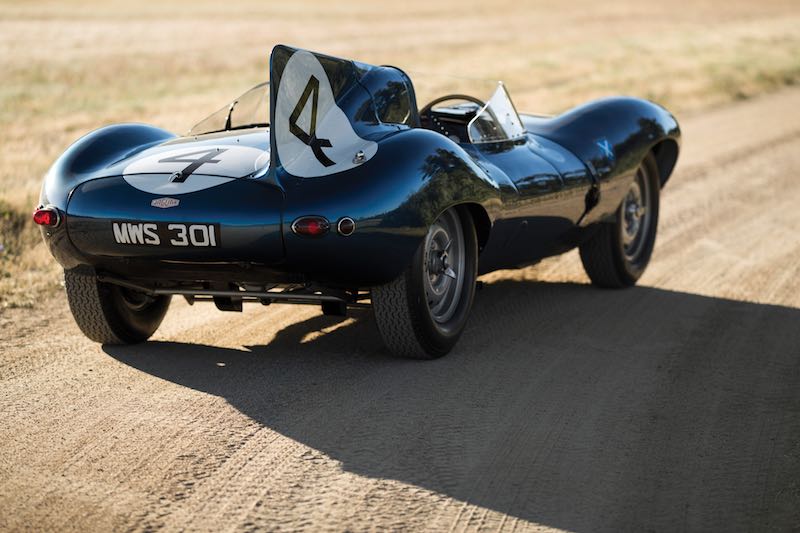
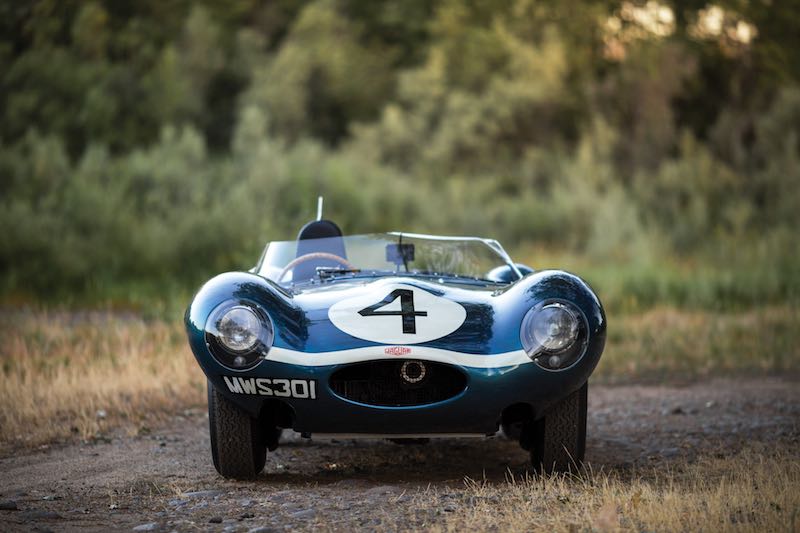
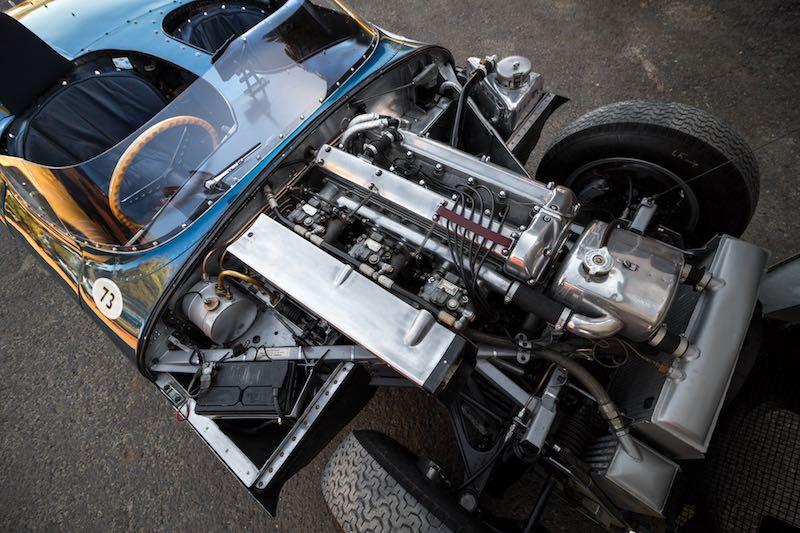
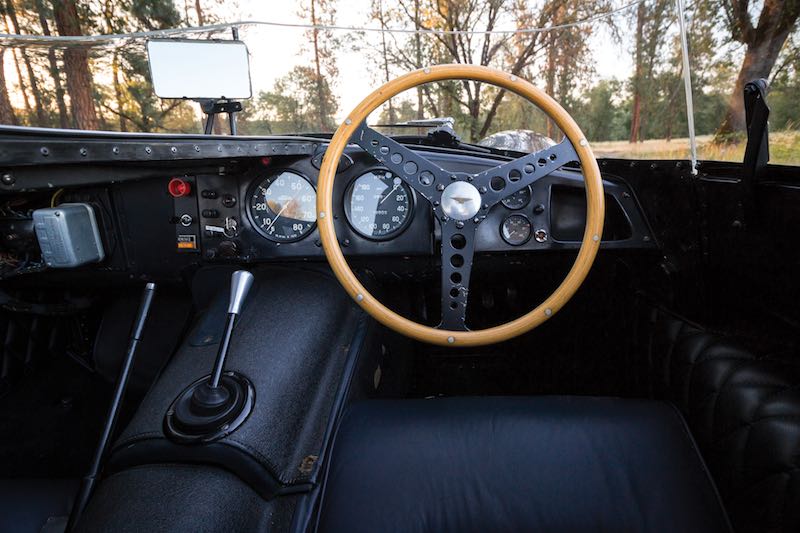
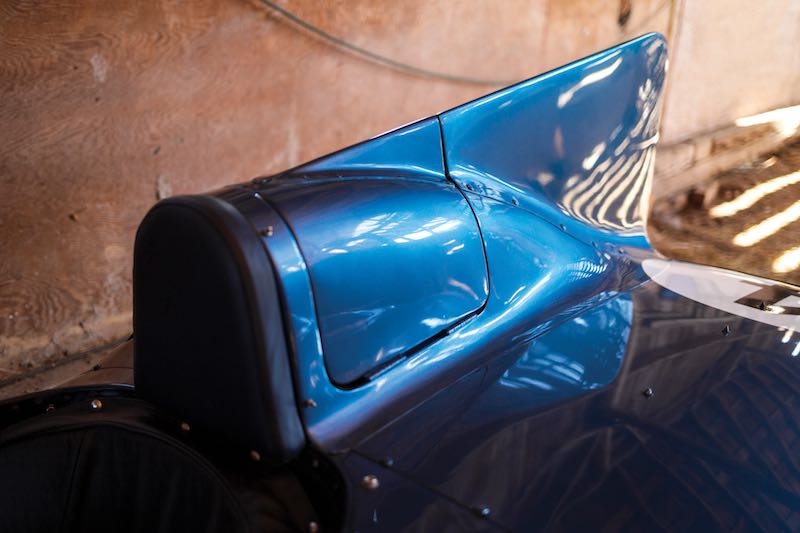
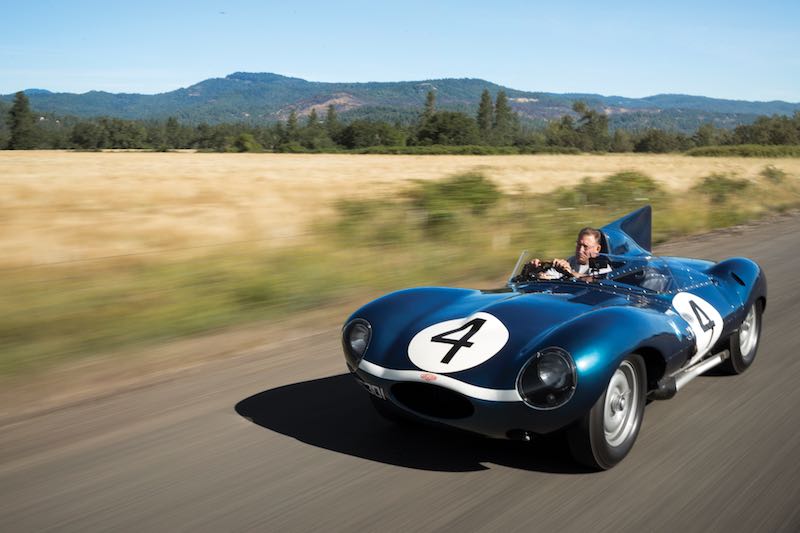
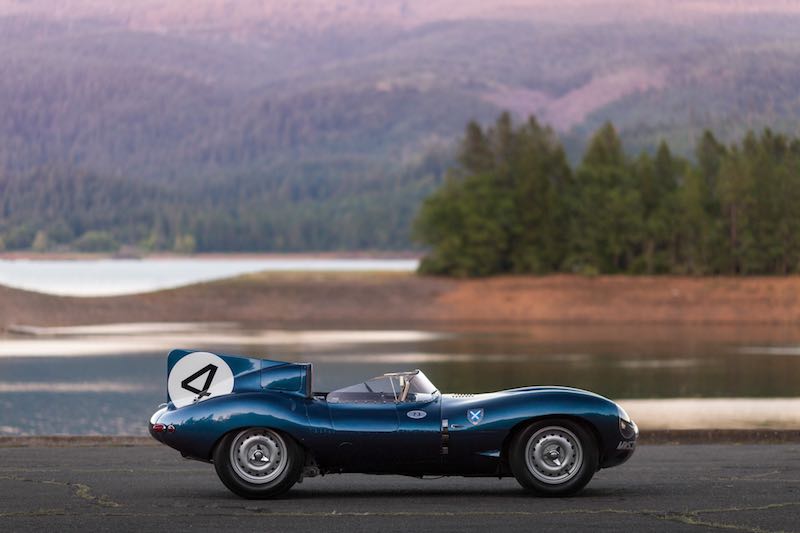
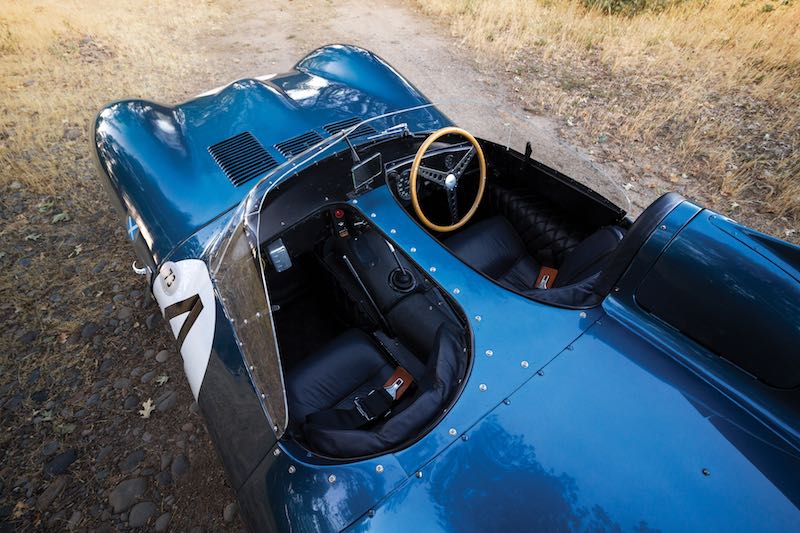
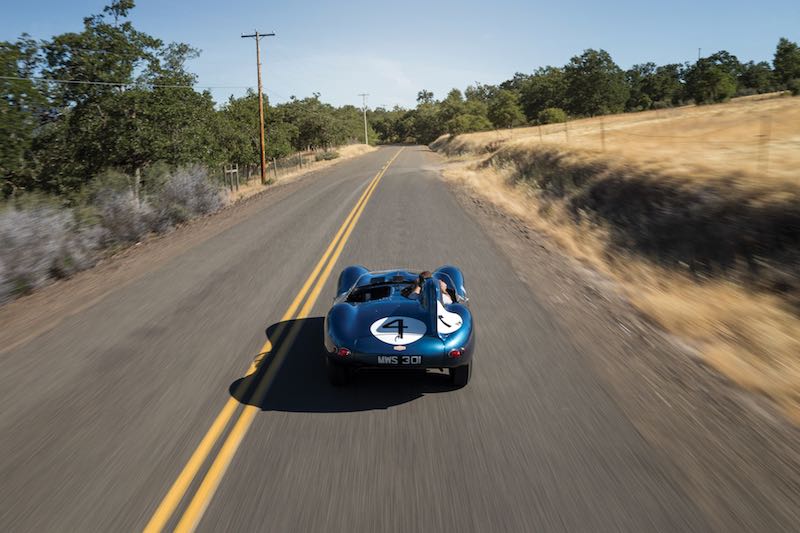
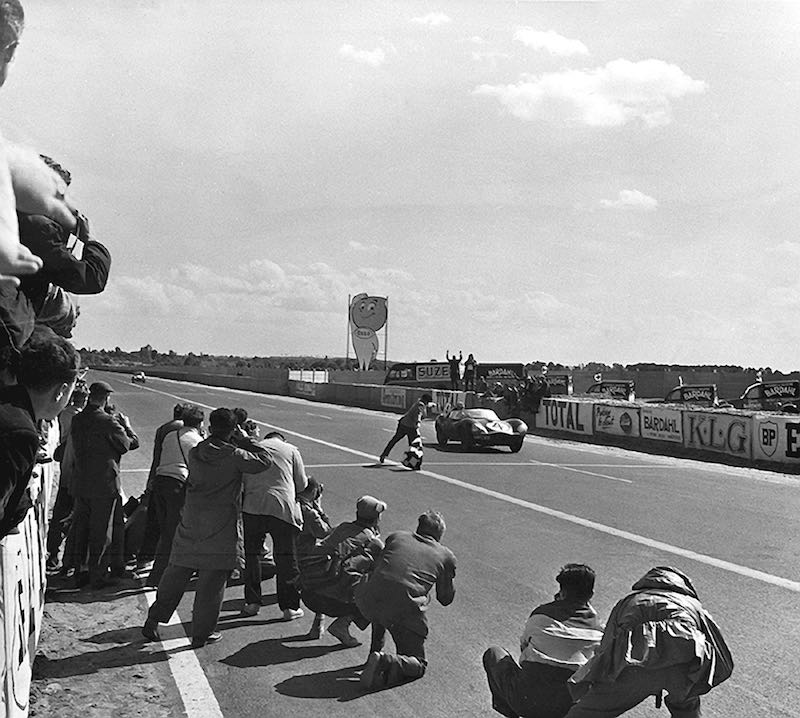
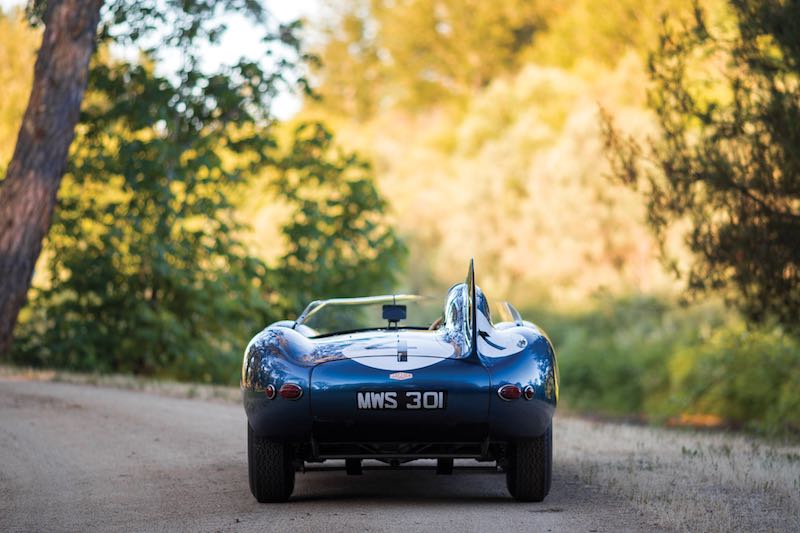
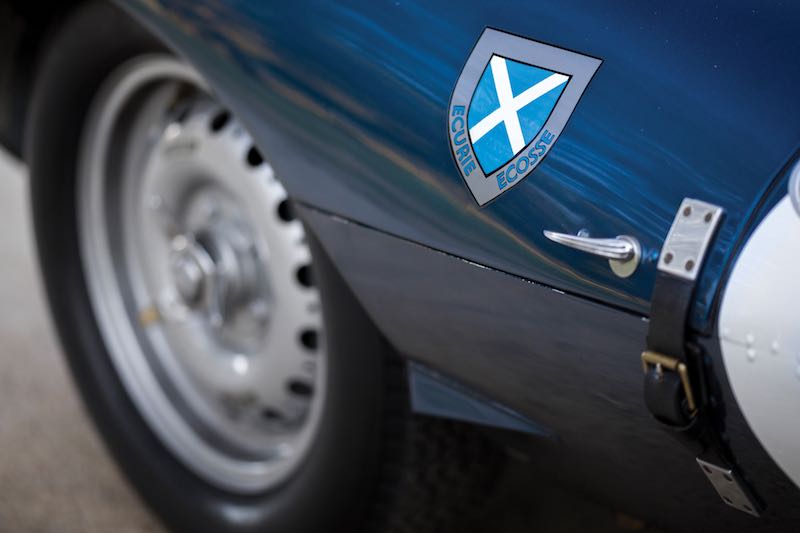
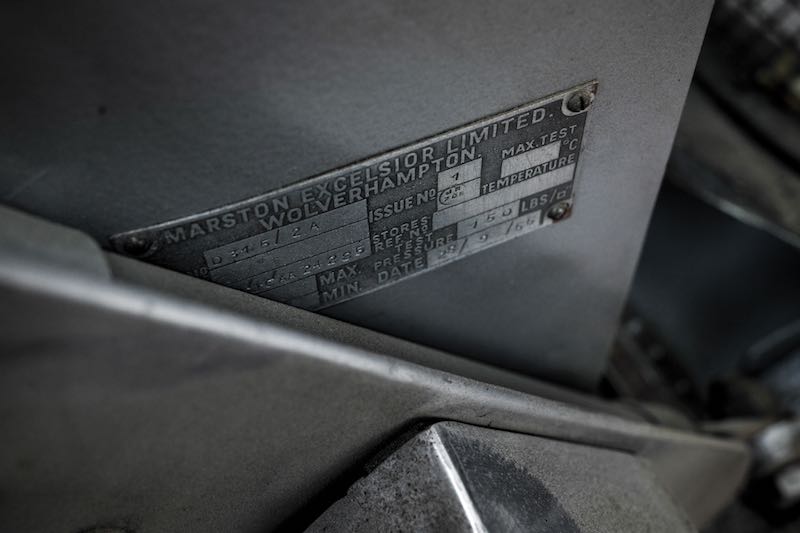
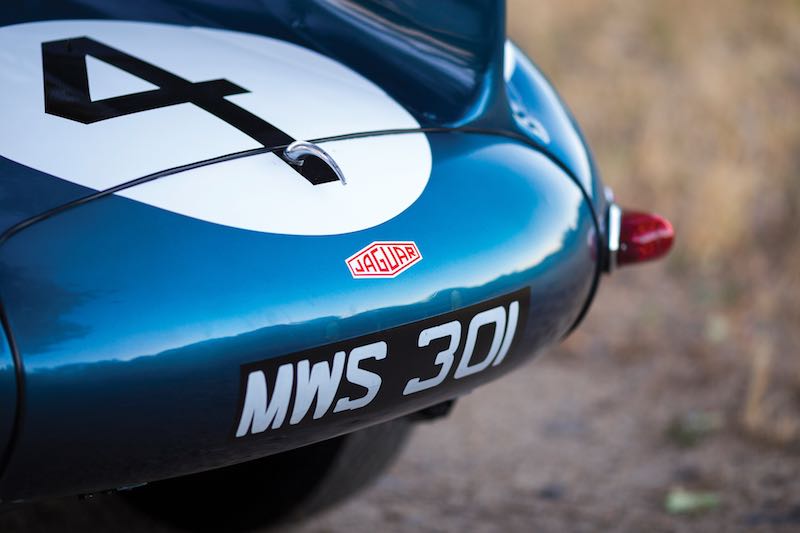
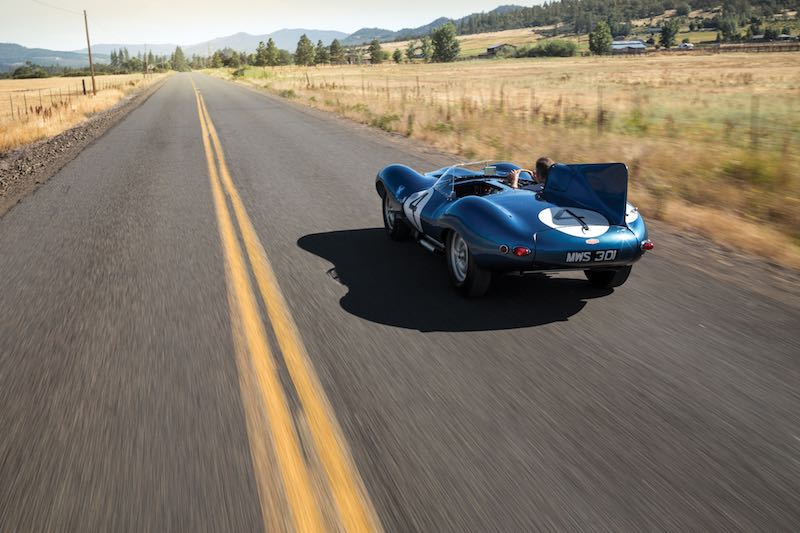
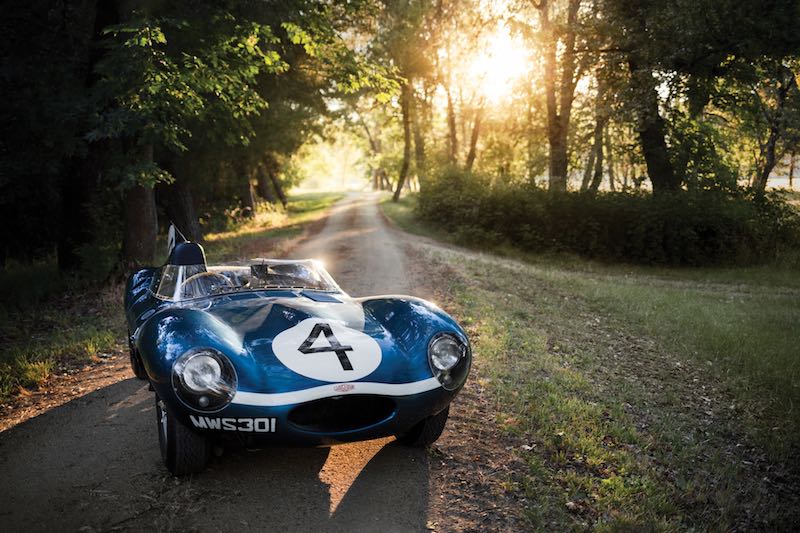
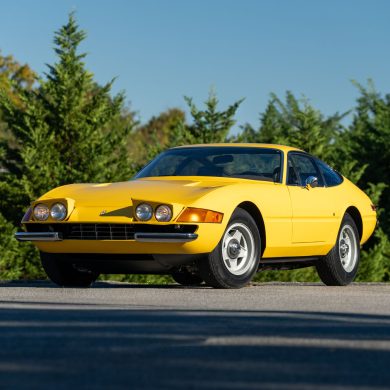
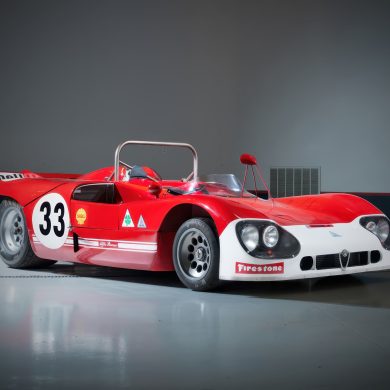
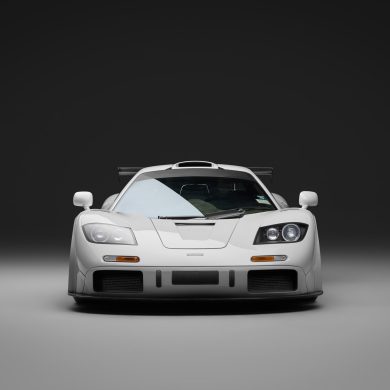
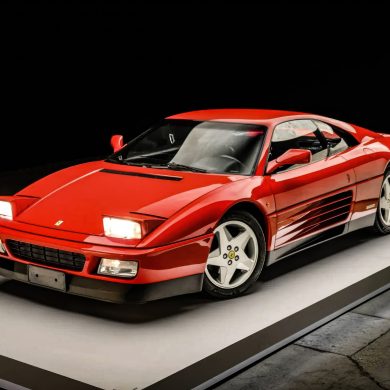
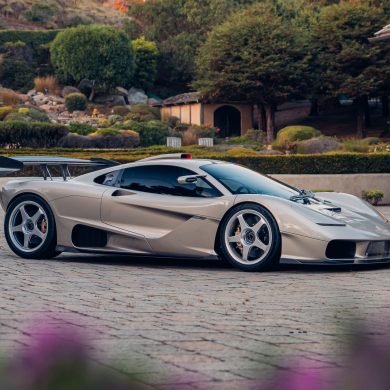
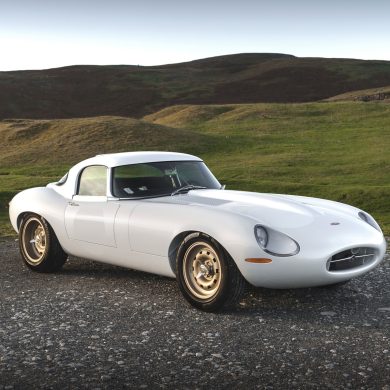


A veritable car that unloke some has an unchallenged history. I have photos of the car outside the barn at Sir Michael’s.
A great write up on the D-type, but one glaring error.
The 1955 tragedy at Le Mans was of course 35 laps into the race, not 3 laps. Hawthorn was coming in to make his first driver change after two and a half hours of flat out dicing with Fangio